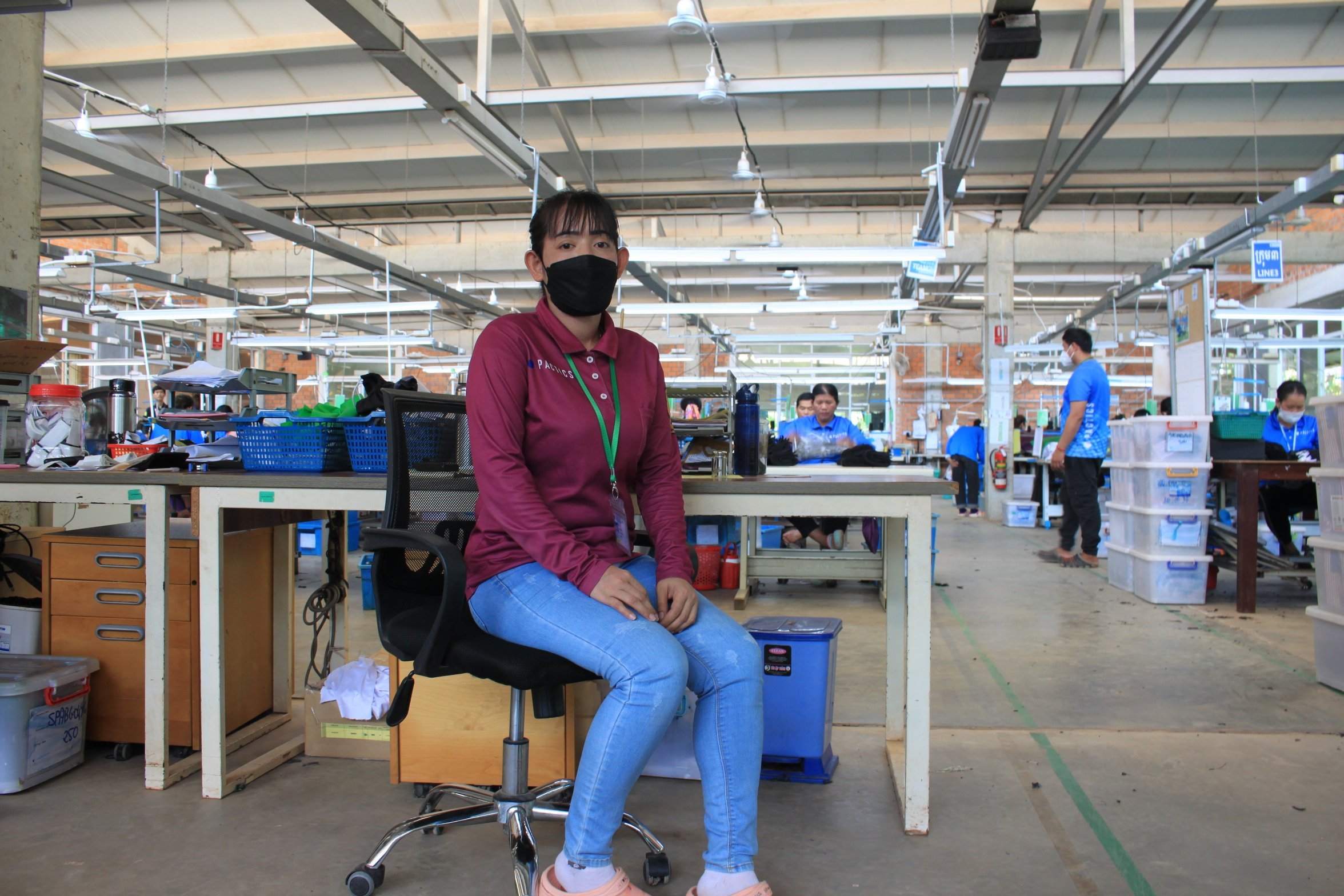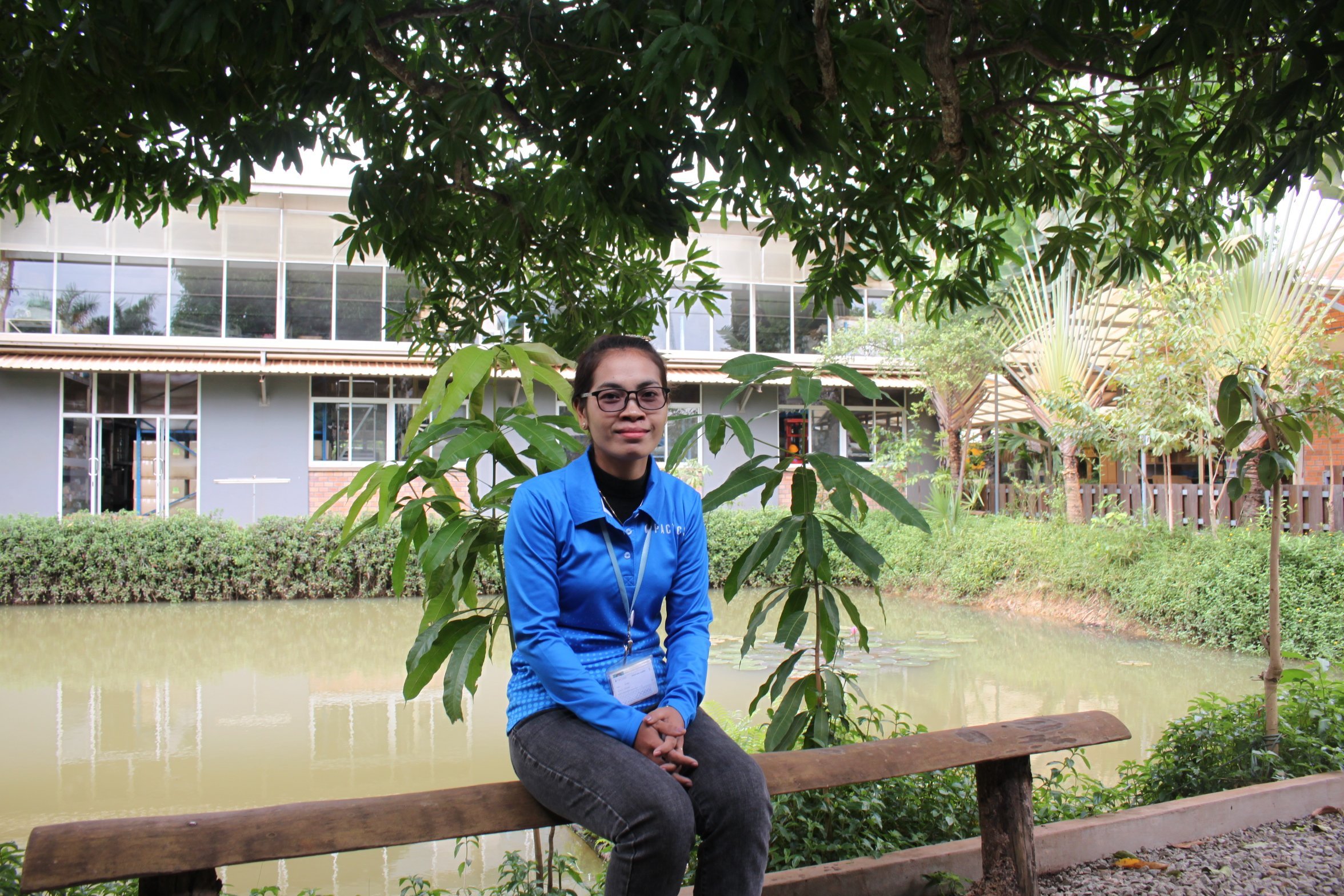An Inside Look at Cambodian Factories from the People Making Products
Vannoeun “Wave” Naing
Factory Manager & Piet Holten (right), Founder
Fibers of Pactics is a 4-part capsule series, produced by Population, in which employees and management at Pactics, a unique manufacturer in Siem Reap, share their invaluable perspectives on the manufacturing industry in Cambodia.
In the first episode of Fibers of Pactics, we looked at the landscape of the Cambodian manufacturing industry and specifically the change overtime. In the second part of this series, Dorian van der Mullen and Kelsey Tsuchiyama are joined by Mrs. Vong Hoy, an operator at Pactics, and Mrs. Chanthea Srim, a supervisor at Pactics, to talk about their experiences working in Phnom Penh and Siem Reap.
Skillset Building in Cambodian Manufacturing
Mrs. Vong Hoy has been working in the manufacturing industry for over a decade, spending time working in both Phnom Penh and Siem Reap. When she first moved to Phnom Penh to work, she looked for a job in manufacturing because she felt that this was the only occupation that was suitable for her education level and found that she really loved sewing. In her time as an operator, she has moved from edge cutting to joining the sewing team to working on Pactics’ most complicated products.
Mrs. Chanthea Srim also moved to Phnom Penh to find a job and started in the manufacturing industry when she was a teenager. Similar to Mrs. Vong Hoy, she started by performing tasks such as inserting drawstrings or attaching buttons for a few months before moving to the sewing team. She wanted to learn as much as possible and dedicated time to practicing her skills, eventually advancing from a single needle to a multiple needle sewing machine. After she learned how to work on several different sewing machines, she felt ready to look for a better job. In her time in Phnom Penh, she worked at four to five factories filling both operator and supervisor roles.
Working Conditions in Phnom Penh
Both Mrs. Vong Hoy and Mrs. Chanthea Srim spoke about the physical environment of the factories they worked at in Phnom Penh, specifically drawing attention to the structure of the buildings, which did not allow in enough natural light or air. Cramped production spaces and toxic chemical smells were the most uncomfortable circumstances working there. Fainting due to the chemicals was a prominent issue at the factory Mrs. Vong Hoy worked at; the final push to leave came when there was an instance of almost all employees, 300-400 people, fainting in one day.
Safe and humane working conditions go beyond the physical environment. Mrs. Chanthea Srim brought up inappropriate language used by team leaders and management when she was an operator. They used rude words and raised their voices. When she became a supervisor, her boss scolded her for not using the same tactics or being hard enough on the operators. The priority was completing the orders which sometimes resulted in supervisors forcing operators to work overtime.
Relationships with colleagues were difficult to form because the stressful environment impeded both Mrs. Chanthea Srim’s and Mrs. Vong Hoy’s ability to connect with people on their teams. Mrs. Chanthea Srim explained that there was very little casual communication with workers in her same position as everyone was too focused on their own tasks, and there was no communication with employees in higher positions.
A Different Environment
Neither Mrs. Vong Hoy nor Mrs. Chanthea Srim had known about Pactics when they moved to Siem Reap. However, different circumstances led them to Pactics and fortunately they found an environment they enjoy. Mrs. Vong Hoy explained that even though she liked her colleagues in Phnom Penh, she has found deeper connections with her colleagues at Pactics. Mrs. Chanthea Srim expressed a similar sentiment; there is respect amongst colleagues and that is seen in the way people communicate with each other.
Mrs. Vong Hoy and Mrs. Chanthea Srim are also appreciative of not just the production area that feels safe, but also the whole facility. Mrs. Chanthea Srim explained that when she saw Pactics’ garden for the first time, it felt like home. The canteen allows for employees to eat at Pactics and not have to eat outside like at factories in Phnom Penh. However, although their working experiences have improved since joining Pactics, there is still plenty of room for Pactics to continue to make changes and improve aspects of the job along with the manufacturing supply chain at large.
To hear more about Mrs. Vong Hoy’s and Mrs. Chanthea Srim’s working experiences and changes they hope to see in manufacturing in Cambodia, tune in to the second part of Fibers of Pactics.
Special thanks to Sithsyat Von for translating Mrs. Vong Hoy’s and Mrs. Chanthea Srim’s responses in Khmer to English.


